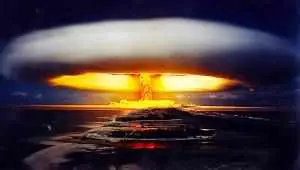The Top 5 Most Powerful Nuclear Bombs Ever Tested
| Nuclear Bomb | Yield (megatons) |
Date Tested (location) |
|
|---|---|---|---|
| 1 | Tsar Bomba RDS-220 (Russia) |
57 Mt (air drop) |
Oct 30, 1961 (Novaya Zemlya) |
| 2 | Test #219 (Russia) |
24.2 Mt (atmospheric) |
Dec 24, 1962 (Novaya Zemlya) |
| 3 | Test #147 (Russia) |
21.1 Mt (atmospheric) |
Aug 5, 1962 (Novaya Zemlya) |
| 4 | Test #173 (Russia) |
19.1 Mt (atmospheric) |
Sept 25, 1962 (Novaya Zemlya) |
| 5 | Castle Bravo TX-21 (United States) |
15 Mt (surface) |
March 1st, 1954 (Bikini Atoll) |
 Special Report
Special Report
What you'll learn in this report:
- What a megaton is, what it looks like exploding, and why we should be in awe of it.
- The Russian army thought 50 million tonnes of nuclear explosion wasn't Chuck Norris enough.
- The U.S. Army's biggest nuclear test and one of its biggest mistakes.
And much, much more...
The Largest Nuclear Explosions Are Measured in Megatons, So What Exactly is a Megaton?
Explosive energy is measured in "kilotons" or "megatons" of TNT. A kiloton is equal to one thousand tons of TNT and a megaton is equal to one million tons of TNT. A million tons or one "megaton" of TNT is an almost unimaginable amount of explosive energy. It is extremely difficult to comprehend that kind of man-made destructive capability.
Let's assume most people have seen the video of the Beirut explosion in August of 2020, and its very dramatic and deadly explosive power. The Beirut explosion was 2.75 kilotons of TNT and we can all pretty much agree that it was an impressive and devastating explosion to see. Now imagine the Tsar Bomba - a 57 MEGATON explosion - that was millions of times more powerful than the one in Beirut. That kind of power boggles the mind.
Tsar Bomba: The Most Powerful Nuclear Explosion to Date
The Russians have a lot of nuclear bombs , but on October 30th, 1961, The Soviet Union tested the most powerful and frightening weapon the world has ever seen. Nuclear weapons are scary enough, but this nuclear explosion was on a scale that no-one had seen before. The Tsar Bomba, or the RDS-220 hydrogen bomb, code name "Ivan" as it is officially known, was tested by the Soviet army in the remote archipelago of Novaya Zemlya. It was 50 megatons according to the Russians themselves at that time. However, modern researchers believe that the actual blast was closer to 57 megatons.
57 megatons of TNT is an unfathomable amount of thermonuclear energy to be released onto this earth. Dropped from a Soviet Tupolev Tu-95 strategic bomber, a huge plane in it's own right, the bomb was attached to an enormous, specially designed parachute, so it would fall slowly to it's detonation point, 3,940 metres, or 2.4 miles above the ground. In theory the slow-drop would give the pilots flying the plane the chance to escape the massive explosion. Incredibly, they had about a 50/50 chance of getting away from the blast alive.
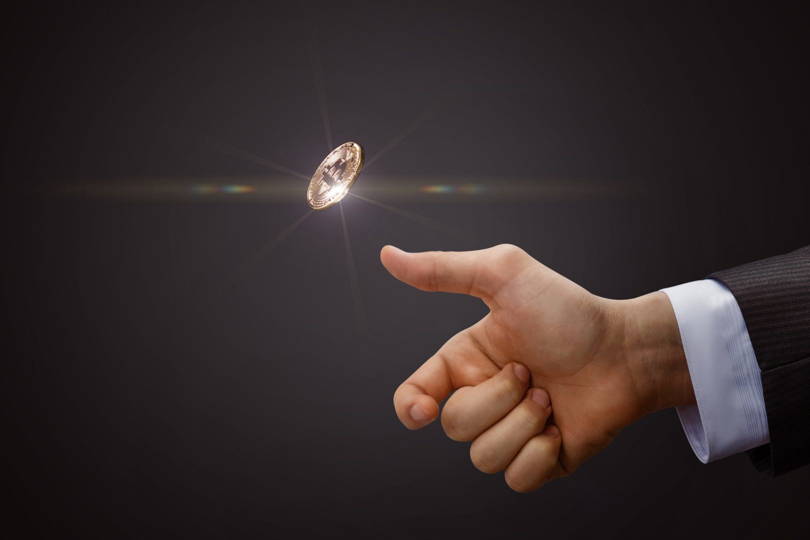
It took three minutes for the bomb to drop from 34,500 feet (10,500 metres) to it's detonation point of 4,000 metres above Mityushikha Bay. When it exploded, the intense heat burnt the paint off the airplane which by now was around 70 miles (112 km) away. The pilot, Andrei Durnovtsev, barely kept his aircraft in the sky as the shock wave smashed into his Tu-95. The plane, knocked out of control by the blast, dropped 5,000 feet before Durnovtsev could regain control of his aircraft again. The explosion sent a gigantic, boiling, mushroom cloud 221,000 feet in the air. That is equal to about 7 Mount Everests. It bloomed up to 40 miles (60km) high, to the mesosphere, the very limit of earth's atmosphere, almost touching space.
The shock wave circled the earth 3 times and registered a magnitude 5 on the richter scale around the world, even though it was detonated in the air. Any building within 35 miles (55km) was obliterated in an instant. People could see the nuclear flash 600 miles away (1,000km), and if a person was standing within 100 kilometres of the explosion they would have received third degree burns from the heat. Windows were broken up to 560 miles away. It made a big bang to say the least.
An interesting fact about this massive nuclear explosion, is that because it was detonated so high up, there was very little radiation fallout. So the RDS-220 also has the distinction of being one of the cleanest nuclear bombs ever detonated.Here is a reported video of the nuclear test.
An Inconceivable Amount of Destructive Power
As mentioned above, when we get to this elite level of thermonuclear energy, we measure it in megatons of TNT which is one MILLION tons of TNT (1 megaton = 1,000,000 tons of TNT). That's a lot of TNT for our minds to try and realistically comprehend but let's just say it amounts to 10 times more TNT that was used in ALL of World War 2. 57 megatons or 57 million tons of TNT, is the equivalent to just about 4,000 Hiroshima bombs.
The Hiroshima atomic bomb was 15 kilotons (one kiloton = 1,000 tons of TNT) and when it was dropped on Hiroshima by the USA in 1945, it leveled 90% of the city. 60% of all standing buildings in the city were flattened. At least 70,000 people were killed almost instantly, and at least another 70,000 people died within weeks of extreme radiation poisoning. Now, imagine what the Tsar Bomba, a 57 megaton bomb, almost 4,000 times more powerful than the one dropped on Hiroshima, would do to a population? Well, you're in luck, because you can find that very thing out here on the very informative interactive Nukemap, without ever harming a soul.
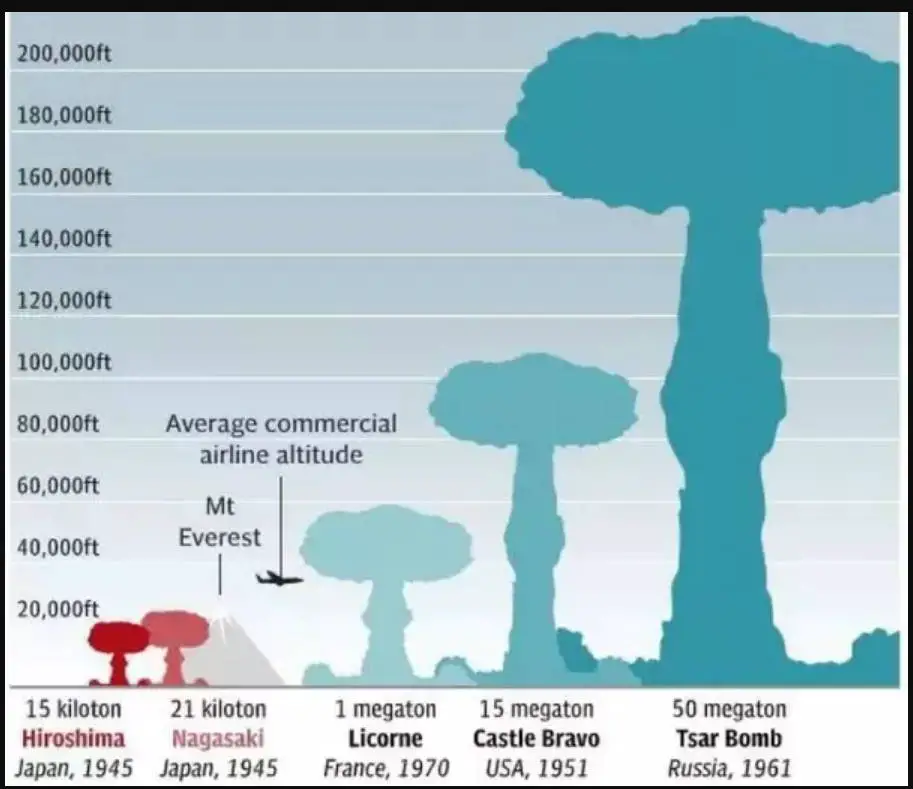
Now here comes the scary part. The Russians, or more specifically Nikita Khrushchev the Russian president at the time, wanted the Tsar Bomba to be double, or more than double the explosive power. That's right. Khrushchev originally wanted a 100 to 150 megaton nuclear bomb, which was then, and still is now, theoretically possible. However the scientists, especially a Russian scientist named Andrei Sakharov, tried to convince Khrushchev to lower the yield. Khrushchev didn't want to lower anything, and they both kind of had words about it. In the end, the Russian military decided that an explosion of that magnitude would result in much more radiation fallout and would almost certainly kill the air crew that delivered it. So they backed down on the 100 - 150 megaton detonation and replaced uranium layers with lead layers thus resulting in around half the explosive yield. The Tsar Bomba test was a huge technical, scientific and military achievement for the Soviet Union at the time. However it was extremely impractical as a deployable weapon in the field because of its size and weight. No aircraft had a bomb-bay big enough to fit it and it was too big to affix to an ICBM. So the Russians figured that it was useless to add the weapon to their useable nuclear arsenal. Just by detonating it, they had proved their point. (A.) Some of this and a lot more is detailed in Dan Carlin's excellent, Podcast on the subject: The Destroyer of Worlds. We really can't recommend listening to it enough.
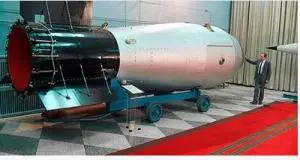
Castle Bravo: America's Biggest Nuclear Explosion...and blunder
Castle Bravo was the most powerful detonation of a series of tests that were done in the Bikini Atoll near a set of islands way out in the Pacific Ocean called the "Marshall Islands". This area was captured from the Japanese army by U.S. forces as a result of the Gilbert and Marshall Islands military campaigns during World War Two. The U.S Army still had bases left in the area after the war, so when the cold war conflict with Russia began, the U.S. Army realized they had the perfect place to test their new powerful weapons of mass destruction. To them, the Marshall islands, lost in the pacific somewhere between Hawaii and Australia very close to the equator, were small, extremely remote, very sparsely populated and very far from the mainland United States or any other largely populated areas. In other words a perfect place to detonate nuclear weapons. So from 1946 to 1959, the U.S. began the first of 67 nuclear tests, detonating 23 nuclear bombs on the Bikini Atoll alone.
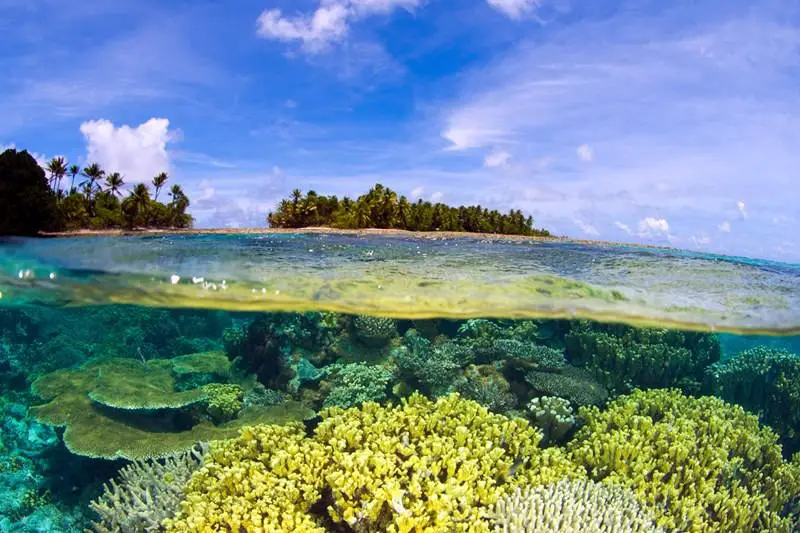
Joint Army/Navy Task Force One, who were responsible for the first operation, Operation Crossroads, basically wanted to show the world that they had more firepower contained in nuclear bombs than anyone on earth (message to Russia: "don't mess with us"), and not only that, these bombs actually worked. They also wanted to see what kind of damage nuclear bombs could do to navy ships, so that the U.S. Navy could build better ships and better prepare their fleet for a nuclear war. So they began with "Operation Crossroads" on July 25, 1946. The operation involved 42,000 men, 242 ships, 156 airplanes, 4 television transmitters, 750 cameras, 5000 pressure gages, 25,000 radiation recorders, 204 goats, 200 pigs, and 5000 rats, and two nuclear bombs code-named "Able" and "Baker". A "dummy fleet" made up more than 90 ships assembled from captured German and Japanese warships, as well as mothballed American Navy ships were set-up for the tests. Real ships were used because models, impossible to make to scale, simply wouldn't produce the data that they needed and besides, everyone wanted to know what these new and powerful weapons would do to a real fleet of ships.
Shot "Able" was dropped from a B29 Superfortress bomber. Shot "Baker" was detonated 90 feet below the surface of the water. Baker did much more damage (C.) than Able. Here is Vice Admiral W. H. P. Blandy, U.S.N., Commander, Joint Task Force One, describing the operation; in the Admiral's own words:
"Operation Crossroads was directed by the United States for purposes of national defense ; but its lesson has world-wide significance. The atomic bomb is definitely not "just another weapon"; its destructive power dwarfs all previous weapons. Observers at Bikini saw the bomb sink great steel warships and, with its penetrating nuclear radiations, reach into ships' interiors to kill test animals. The explosions in air and underwater were very different spectacles, but their end results mean the same : death and destruction on an enormous scale." (C.)Then came "Operation Castle", a series of high-yield nuclear tests and one big, unexpected bang.
Castle Bravo, or "Shrimp", as the actual device was affectionately called, was at 15 megatons, the largest nuclear explosion the United States has ever attempted before or since. The explosion was the first of a series of 7 high-yield tests of nuclear explosions in the "Operation Castle" series of tests that Joint Task Force 7 detonated in the Bikini Atoll area of the Marshal Islands.
The lead scientists, likely knowing that they were literally playing with fire here, suspected that "Shrimp" may actually explode at a force up to 20% more than their calculations suggested. Boy were they wrong.
What actually happened was "Shrimp" detonated at over 150% the nuclear force that they had calculated with all those nerdy slide rulers. Instead of a 6 megaton yield, the bomb detonated at 15 megatons. The effect of that miscalculation on the Bikini Atoll, and on the world at that time, was absolutely devastating. The fallout was both radiological and political, and changed the way the world thought about nuclear weapon testing.
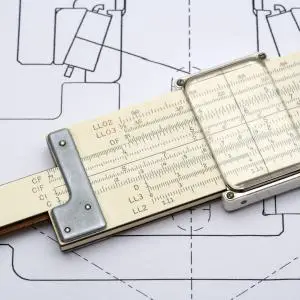
Every Nuclear Bomb Test on Earth Has Been Tracked and Accounted for...Except One.
There are only eight countries in the world that have tested (detonated) nuclear weapons. 528 of those nuclear explosions have been atmospheric, meaning above ground, and 1,528 of them have been underground. All of those 2,056 nuclear explosions have been carefully tracked and recorded and all are accounted for except for one mysterious nuclear "flash" detected by the US satellite "VELA 6911" which was designed to detect nuclear explosions in space or on Earth. On the morning of the 22nd of September 1979 it did just that, the problem was the nuclear "flash" occurred in the Indian Ocean and nobody knows what caused it, even to this day (D).
The U.S. Army B-41/Mk-41 Nuclear Bomb: deployed but Never Tested
The second most powerful bomb ever made (but never actually tested) was an American B-41 or Mark-41 high-yield strategic thermonuclear bomb. The full bomb was never tested probably because of the negative "fallout" (literally and figuratively) of testing such a bomb on U.S. soil, especially after the Castle Bravo "ooops". The bomb had two theoretical blast yields of 10 megatons and 25 megatons, depending on the mood of the army general that day.
We could tell you that the 25 Megaton yield applies only to a dirty "Y1" version of the bomb, with the clean "Y2" version having the lower yield of 10 megatons, but really, let's be honest, we don't understand all this bomb-jargon either, because we are not nuclear bomb scientists and besides, most of this information is still classified anyway. The dirty Y1 version has a U-238 encased tertiary stage, if that helps you any.
The B-41 was manufactured and put in to the field of play (and by "field of play" we mean "pointed at Russia") in the early 1960s. About 500 B-41s were deployed by the United States Strategic Air Command, some of them affixed to Titan II intercontinental ballistic missiles. They remained pointed at Russia until 1976 when they were taken out of service.
These Weapons Possess an Insane Amount of Destructive Power
It is difficult to comprehend the god-like, destructive energy that a nuclear bomb unleashes into our world. There are few people on earth who have seen a nuclear explosion in person and that is not a bad thing. The ones who have seen a nuclear bomb detonate in person however, have had their lives forever altered, both physically and psychologically, by the unimaginable power of the bomb.
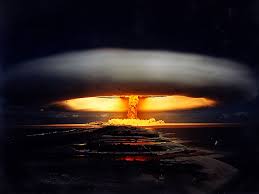
A Glimpse into Nuclear Armageddon
The Atlantic's excellent documentary, "The Atomic Soldiers", by Morgan Knibbe, interviews the brave U.S. servicemen who were involved in the testing of the U.S. Army's nuclear arsenal, and gives us a unique glimpse of just how much these people were changed by what they saw. The Atlantic's Emily Buder puts it this way: "Nearly everyone who’s seen it and lived to tell the tale describes it the same way: a horrifying, otherworldly thing of ghastly beauty that has haunted their life ever since." (B.).
It is estimated that 400,000 U.S. service men and women have been witness to nuclear bomb detonations, many of whom were recruited for "research purposes" and have signed secrecy oaths which, if broken, could lead to up to 10 years in prison. The effects of being exposed to such naked power is chillingly outlined in the captivating documentary above, and the tale is told by the people who were there to bear witness to it.
The State of Nuclear Weapons Today
As of April 2021, these are The Top 5 Countries With the Most Nuclear Weapons. As you can see, the top two countries, Russia and The United States, have enough nuclear bombs to end each other, and all life on this planet with them, many times over.
As of this writing, a treaty to ban nuclear weapons is being signed by 50 UN signatory countries effectively making the production, use and stockpiling of nuclear weapons illegal from January 1st, 2021. This act, although important, is considered mostly symbolic as none of the nuclear armed countries, Russia, The United States, France, The UK or China, have signed on to the treaty. These nuclear-armed countries are still playing their "nuclear deterrent/ mutually assured destruction" game, and so, humankind is sill living on the knife's edge of a nuclear holocaust.
Here is J. Robert Oppenheimer, the father and inventor of the nuclear bomb, speaking about how he and his team felt when they witnessed the first test detonation:
An interesting side-note to all of this is that Harry. S. Truman, the American president at the time, basically hated Oppenheimer for this "about face" on the atomic bomb. After a meeting with Oppenheimer, President Truman told his Secretary of State Dean Acheson, "I don't want to see that son of a bitch in this office ever again."

Noel James Riggs, Head Writer at www.top5ofanything.com.
Comments? Write me at: NJRtop5ofanything@gmail.com
Top 5 sources:
A. Comprehensive Nuclear-Test-Ban Treaty Organization. (2020). 30th October, 1961 - The Tsar Bomba.B. Buder, Emily. (2019). "Atomic Veterans Were Silenced for 50 Years. Now, They’re Talking."
C. Shurecliff, W. A. Bombs at Bikini: The Official Report of Operation Crossroads. New York. Wm. H. Wise & Co. Inc. (1947).
D. Cohen, A., Burr, William (2020). "Revisiting the 1979 VELA Mystery"
Sources: Top 5 of Anything nuclear bomb research 2021.
List Notes: Data is the top 5 most powerful nuclear explosions ranked by megatons of TNT. Note: one megaton is equal to one million tons of TNT. All nuclear bombs on this list are thermonuclear - hydrogen bombs.
